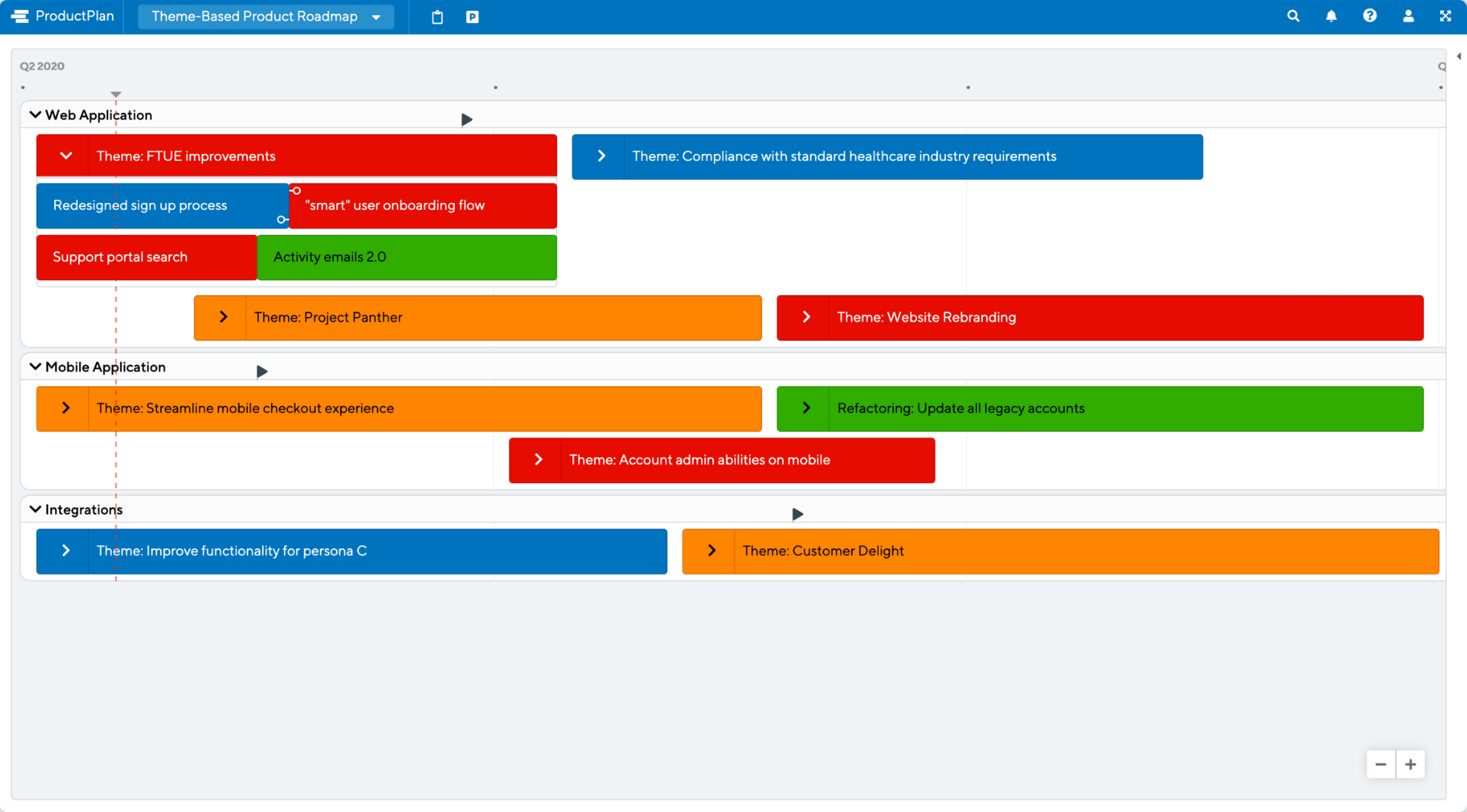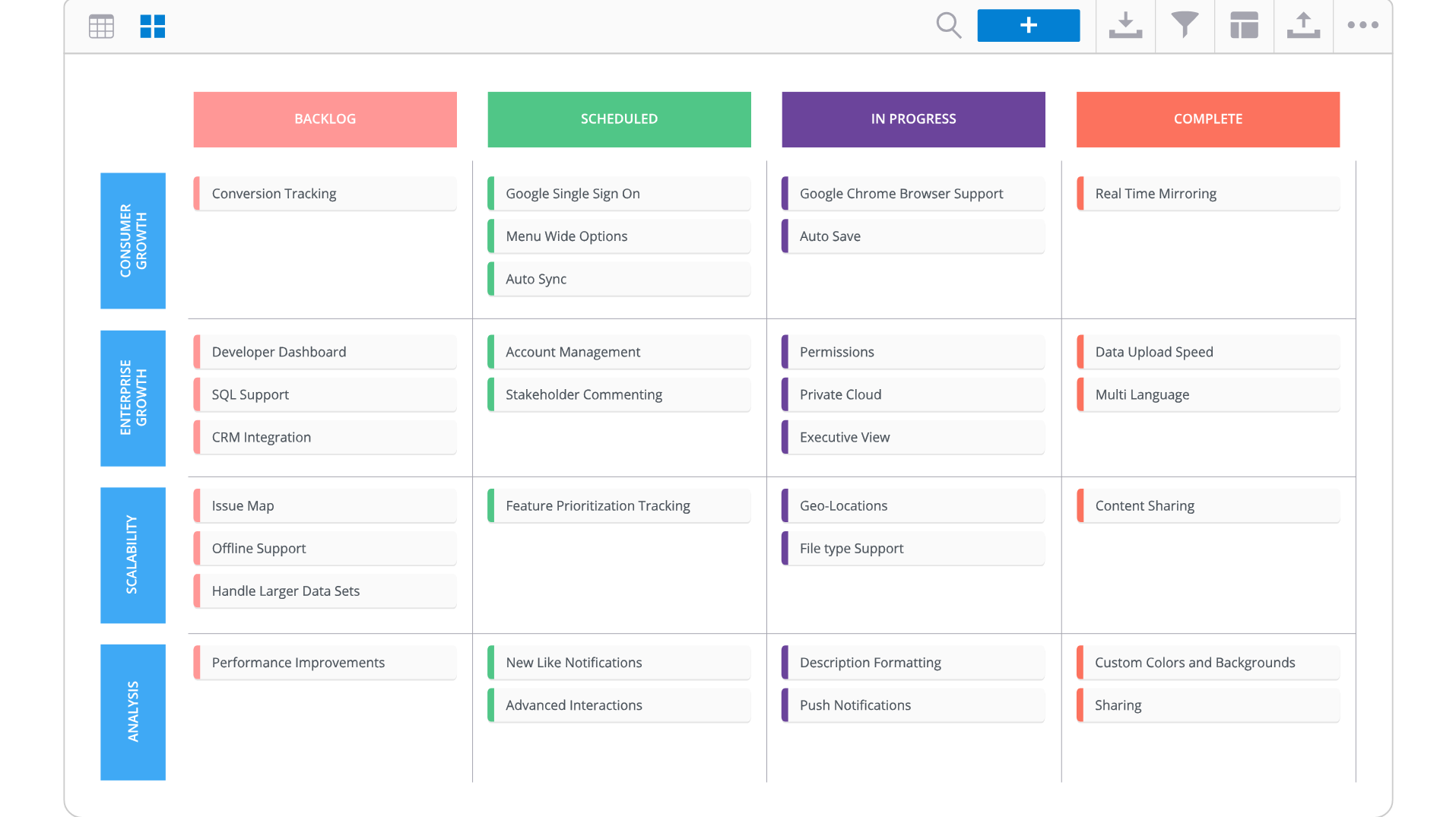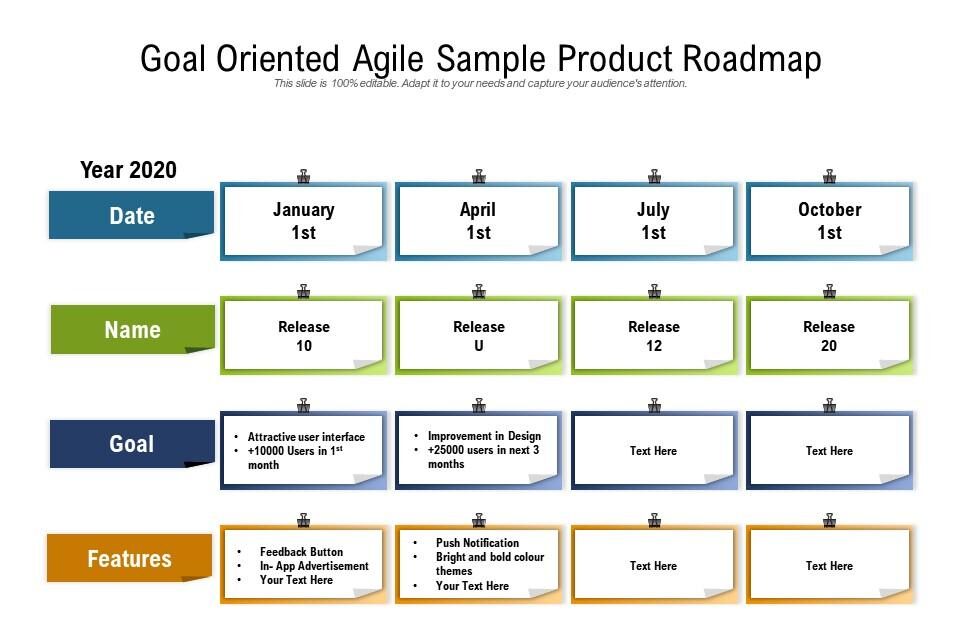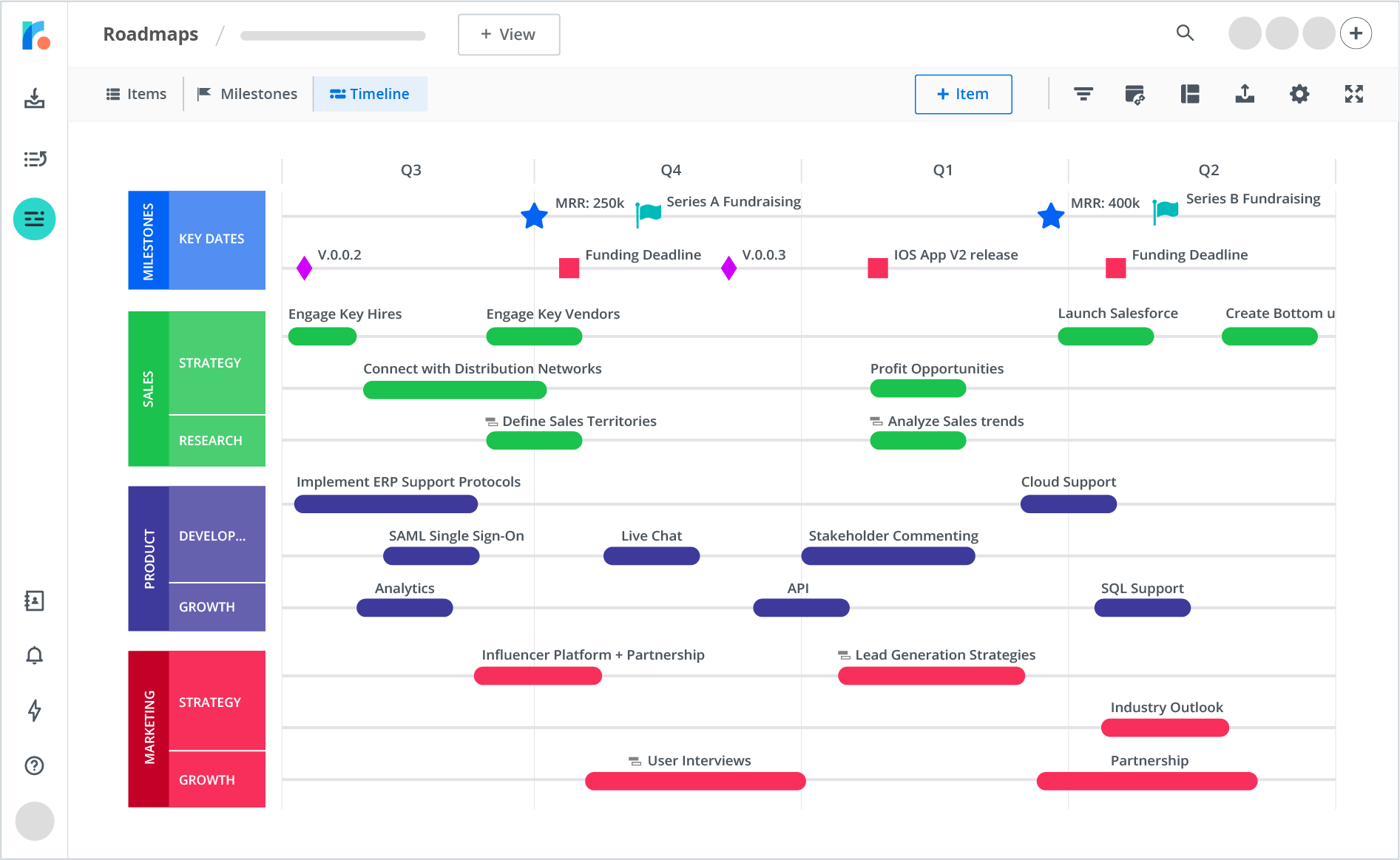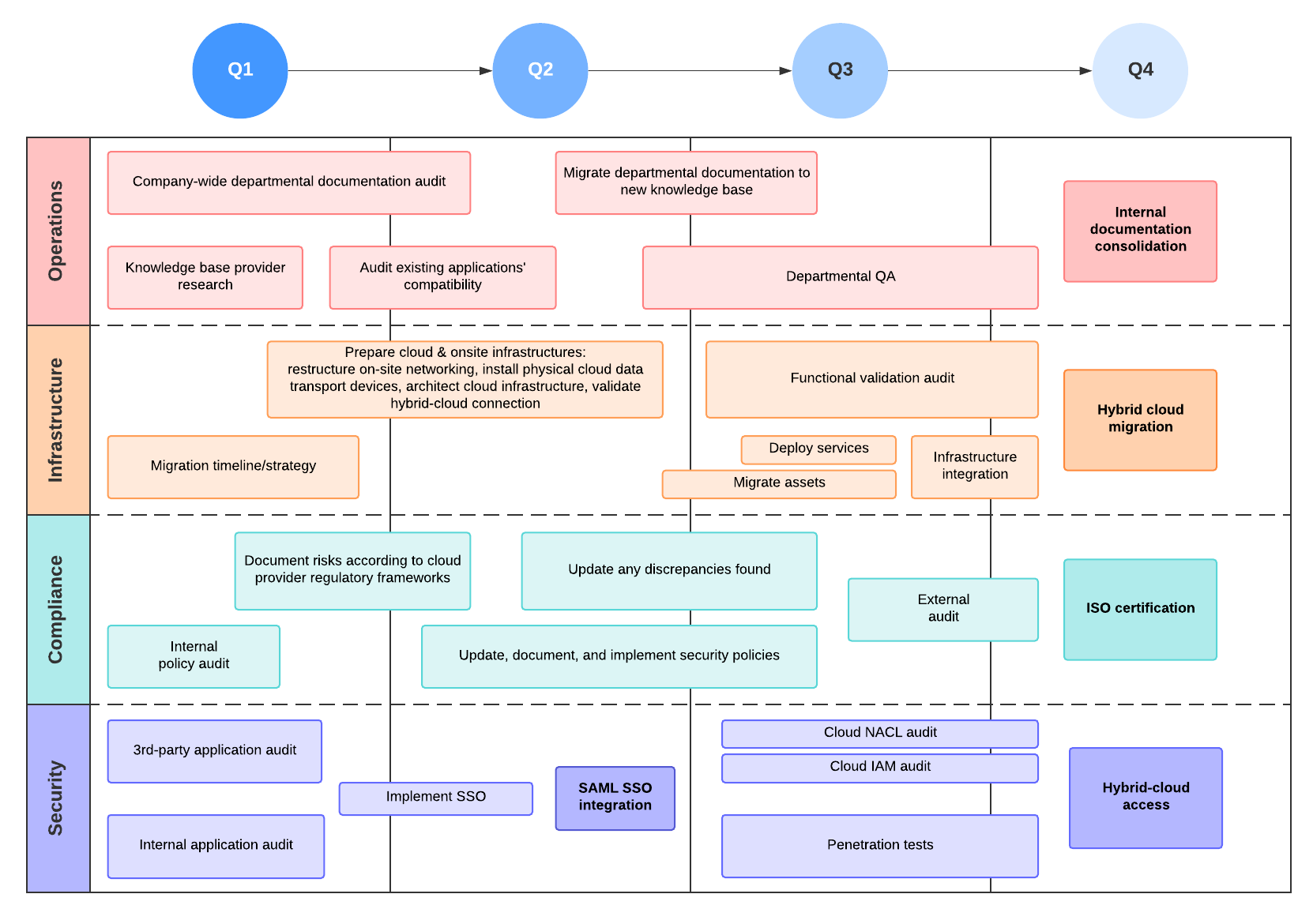If you’ve ever tried to develop a new product, you probably felt lost and overwhelmed. It was hard to decide what to do first. Delays, wasted resources, and even product failure often result from these challenges.
Think about having a step-by-step guide that aligns your process with your strategic goals.
Here, at LaunchPad Lab, we create product roadmaps as the first step to working with a new client. This approach helps us to streamline our work and set the project up for success. In this article, you’ll get the info you need to navigate product development efficiently, turning challenges into rewards.
What Is a Product Roadmap Document?
A product roadmap is a strategic plan that shows the vision, direction, priorities, and progress of the product over time. It’s a plan of action that sets short- and long-term goals for the product or project and shows how they will be reached.
Product owners leverage roadmaps to work with their teams and agree on what to do next. The roadmap helps the team understand what they should work on each day. Moreover, it provides context and the direction for the future.
Why Should You Build a Product Roadmap?
The greatest benefit of the product roadmap is the strategic vision it provides to all stakeholders. The roadmap matches product and company goals with development efforts, which helps teams work together to make great products.
As a result, you avoid tedious micro-supervision of each person involved, or tracking the progress of sprints.
To better understand the product roadmap purpose, think of it as a roadmap that gives you a 10,000 ft view of the product and the key areas of emphasis.
The product roadmap will help you to structure team alignment on priorities. The product roadmaps demonstrate how product priorities fit into the vision and strategy.
For instance, while working with our clients, we always encourage them to implement a product roadmap into their development process. This helps them to simplify gathering user feedback and consensus on the product’s direction across the entire company.
Another benefit of product roadmaps is clarifying product positioning. Senior management, marketing, and the product team use them to identify gaps and opportunities vs. competitors in the market. This helps you better identify which areas of focus might make the product more competitive.
It’s important to note that product roadmaps are living and breathing organisms. They should always be prepared to change based on resources available, company priorities, and market conditions. Ideally, you’d want the roadmap development process to be a cycle that feeds into itself.
How To Get Started With the Product Roadmap Development Process
Creating a roadmap is not a difficult task.
At the very beginning, you just have to ask yourself a couple of well-measured questions:
- Why would clients be interested in my product?
- Who is my product intended for?
- What aspect of my product is most important?
- What are my goals?
- What is the hypothesis behind my goals?
- Is the idea behind my product flexible?
- Am I flexible?
1. Create a Clear Vision and Strategy for Your Product
When you start to develop your product roadmap, you should begin with the ‘why’ question. This will allow you to understand and communicate the primary reasons behind creating a product.
- What sets your product apart?
- Why is it needed in the market?
Your product must offer unique value to customers. The best way to do so is to do market research to find out what your competitors’ products lack. If this won’t be enough – schedule a user interview.
A business model that underlines key factors and outlines how the product will generate revenue is vital.
You’ll be able to prioritize features and shape your roadmap more effectively by asking these strategic questions.
2. Personalize Your Roadmap for Your Target Audience
It’s important to realize different stakeholders will see your product roadmap differently.
You might present a different roadmap to the management team than to the product or development team. Customization is key here.
A roadmap should be adaptable to each target audience, giving stakeholders confidence that your product will exceed their expectations.
Get to know stakeholders from various teams, and understand their concerns and expectations.
3. Develop Strategic Themes for Your Products
You’ll get more out of your roadmap if you use strategic themes. Strategic themes provide a concise description of an organization’s strategy. To achieve success, one must understand what needs to be done to reach the goals.
Your product’s future can be summarized by key themes or ‘swimlanes’. You can pick broad themes like “improving user experience” or “retaining customers”. Then you can break them down into ‘epics’, which are big jobs that can be divided into smaller ones.
The next step is prioritizing where themes are ranked based on their contribution to the overall product strategy.
3. Describe the Product and Its Goals
You have to establish the product’s scope and define strategic goals.
To identify the users’ pain points, you need both qualitative and quantitative user research, like focus groups.
Cross-functional teams, including sales, should negotiate and collaborate during this process. There’s a good chance everyone won’t agree right away. Most likely, it’ll be an ongoing conversation, focusing on what’s most important.
4. Think About Your Goals and Come Up With a Hypothesis
There should be a hypothesis behind every idea on your roadmap. You need a validation plan and a clear vision of what you’re trying to accomplish, as well as a goal.
5. Stay Adaptable
Keep in mind that your product roadmap isn’t set in stone. After a product or service release, it will continue to evolve. Shifts in the market, new offerings from competitors, technological advancements, and feedback from stakeholders and users could all lead to changes.
In other words, don’t let changes to the original plan derail your overall strategy. Maintaining a flexible and collaborative roadmap is key, especially in agile environments. Make sure you revisit your roadmap regularly and adjust it as priorities change.
Consider these changes as valuable lessons learned on your journey towards a successful product.
Types of Product Roadmaps
Let’s take a look at some example product roadmaps to give you a better understanding of what you will create.
Theme-Based Roadmap
A roadmap provides a broad outline of a product’s intended trajectory, instead of a specific list of features or a timeline. It gives an overview of the product’s future. You can use it to keep stakeholders updated on the company’s goals and plans. Themes usually reflect the company’s key business objectives or customer needs.
Features-Based Roadmap
A feature roadmap shows what features a team plans to add to a product in the future. It provides an overview of the development process. It is often used in technical conversations or planning sessions. Not only that, but it provides more detail in these settings.
Goal-Oriented Roadmap
This type of roadmap is also known as an objectives-oriented roadmap, which focuses on the strategic goals of the organization. You can see several items on the roadmap concerning Key Performance Indicators (KPIs). These KPIs will help you evaluate your company’s performance.
Release Roadmap
It is important to keep track of the major releases or versions of the product as it develops over its lifecycle. When there are big updates on your project in the future, you can use it to show both external and internal stakeholders when and how you plan to make these changes.
Strategy Roadmap
The strategy roadmap represents a high-level visual summary of your product’s direction and vision at a high level. Communication between executives and employees is usually done through this method.
Technology or IT Roadmap
IT roadmaps are used by organizations to communicate their technology strategy to the rest of the organization. It is commonly used within IT teams to demonstrate how technology initiatives align with the goals of the organization.
Final Thoughts
Creating a product roadmap, which outlines how a product will grow, begins with a product board. It helps communicate priorities and align team goals.
The types of roadmaps include theme-based, feature-based, goal-oriented, and release roadmaps, which track product releases. It’s crucial for your product to find a unique value, target audience, and strategy before you start creating it. Moreover, you should leverage usability testing to develop strategic themes tailored for different stakeholders.
The roadmap should remain adaptable despite the initial planning. The product roadmap must be adaptable due to changing market conditions, competitor offerings, stakeholder feedback, and ongoing usability testing. These factors require the roadmap to be flexible and able to adjust to the changing environment.

